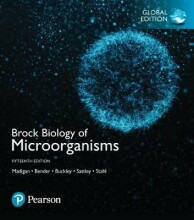Microbial Symbioses with Humans - Gastrointestinal Microbiota
10 important questions on Microbial Symbioses with Humans - Gastrointestinal Microbiota
What are the three different general enterotypes? What are they enriched in?
- Enterotype 1: enriched in bacteroides
- Enterotype 2: enriched in prevotella
- Enterotype 3: enriched in ruminococcus
What are the functions of the gastro intestinal microbiota?
- Metabolism of xenobiotics
- Intestine functioning is stimulated
- Development and activity of the immune system
What are the products of the intestinal microbiota?
- Vitamins (thiamine, riboflavine, pyridoxine, B12, K)
- Gas (CO2, CH4, H2)
- Odor (H2S, NH3, amines, indole)
- Organic acids (acetic, propionic, butyric acids)
- Enzymes (glycosidase reactions)
- Steroid metabolites (esterified, dehydroxylated, oxidzied, or reduced)
- Neurotransmitters (tryptamine, 4-ethylphenylsulphate)
- Higher grades + faster learning
- Never study anything twice
- 100% sure, 100% understanding
Describe the microbial composition of the stomach and the factors influencing the diversity of bacteria in the gastric environment.
Explain the changes in bacterial numbers and microbial composition from the stomach to the small intestine.
Highlight the characteristics of the large intestine's microbiota, focusing on the role of obligate anaerobes and bacterial diversity.
Discuss the microbial diversity in the human colon and the concept of enterotypes.
Elaborate on the products of gut microbial metabolism and their significance in host physiology.
Examine the role of the gut microbiome in "educating" the immune system and the consequences of insufficient microbial exposure.
Give examples on faculatative aerobes, obligate anaerobes, and other thypes of bacteria, that can be found in the colon
The question on the page originate from the summary of the following study material:
- A unique study and practice tool
- Never study anything twice again
- Get the grades you hope for
- 100% sure, 100% understanding
































